The following is the third in a four part series by historian Dr Claudius Fergus on the enduring—and arguably unjustifiable—heroic standing of Christopher Columbus in modern society:
The attempted ecclesiastical resurrection of Christopher Columbus did not extend beyond the Spanish American Empire or beyond the walls of the church of Nuestra Señora del Pilar (Our Lady of the Pillar).
The most startling evidence for this assertion comes from Portuguese profane art. In 1717, the King of Portugal built the Mafra National Palace. Like the Sistine Chapel in Rome, the ceiling of its main chamber, the “Hall of Discoveries”—also called the “Hall of Portuguese Heroes”—was covered with the allegorical art of Cirilo Machado.
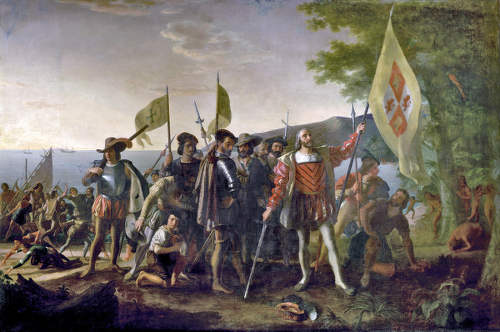
(Copyright Latina American Studies)
Curiously, Columbus is the only one of the four illustrated “Discoverers” humiliatingly depicted. His hand and foot are bound together with a long, thick chain—obviously, Francisco de Bobadilla’s chain—as if to indicate his true status in history up to that time.
Interpreting motifs in historical art is risky business. One must consider a number of factors, including the political climate of the time, the political orientation of the artist, the orientation of the patron who commissioned the work, and much more.
Mindful of these constraints, I offer my own analysis. The two angels at Columbus’ side are mere children; his visage is a portrait of moroseness and melancholia. These motifs lead me to conclude that the artist saw Columbus as a soul in purgatory, not yet ready to be rescued from ignominy and elevated to a higher place in history. Alternatively, Machado saw him so burdened by the crimes he had committed that the keeper of the mythical scale of truth required stronger angelic resources to redeem him.
Less than two decades after Machado’s painting, however, evidence suggests that the seed sown in 1640 by the Council of Zaragoza was beginning to germinate in new soil—albeit outside of Europe—producing a hybrid fruit that no longer tasted of the bitter memory of Columbus’ notoriety. Columbus would become America’s icon of self-assertion, nationalism, patriotism and militarism.
In 1730—against the rapid encroachment of Britain, Holland and France into Spain’s Alexandrian “donation”, and Britain’s new stranglehold on the asiento (the contract to supply Spain annually with 4,000 African captives)—Pope Clement XII mandated the commemoration of Our Lady of the Pillar throughout the Spanish Empire on October 12.

Under Clement’s successors, several churches were erected with the name Nuestra Señora del Pilar. Accordingly, the Virgin Mary as Our Lady of the Pillar was reinforced as the patron of Spanish imperialism in the Americas; and the commemoration of “Discovery Day” became indistinguishable from the veneration of the Virgin Mary.
The beatification of Columbus was now confirmed. While this is said hyperbolically, it is by no stretch of the imagination specious. Indeed, in 2009, the Knights of Columbus petitioned the Pope to formally canonise Columbus.
The eighteenth century was the age of the Enlightenment, a period that claimed the triumph of reason over faith and empiricism over superstition. Accordingly, the full restoration of Columbus in Spain could only be accomplished after a thorough historical revaluation.
The eighteenth century also saw the birth and rollout of what came to be called Scientific Racism. Both movements celebrated the innate racial superiority of the white, West European male.
As Scientific Racism became inextricably embedded in Enlightenment thought in the latter eighteenth century, Columbus was resurrected, sanitised and presented as “el inmortal” (the immortal) and “el ilustre genovés” (the illustrious Genovese).
The leading work on this re-invention was Historia del Nuevo-Mundo (History of the New World) by Juan Bautista Muñoz, a Spanish historian-consultant on the relocation of the archives of the Council of the Indies to the General Archives of the Indies in Seville. These archives had a trove of documents on Columbus.

Although Muñoz began contemplating the work from as early as 1779, it was only published in 1792, on the 300th anniversary of Columbus’ first landing in the Caribbean.
Muñoz’s Historia was the blueprint for American writer Washington Irving’s more comprehensive revaluation, A History of the Life and Voyages of Christopher Columbus, first published in 1828. Although this book was one of the most widely read in the nineteenth century, it was not devoid of fiction, as Irving was a product of the Age of Romanticism in which he functioned.
For example, Irving was the one who invented the myth that Columbus believed the earth was flat.
Irving, however, did not provide the stimulus for “Columbianism” in the United States; rather, he was a product of it. The spectacle of US leaders reclaiming Columbus from notoriety and elevating him as the secular icon of liberty, patriotism and enlightenment is a historical oddity. After all, Americans were essentially Protestant in their worldview and hostile to Spain when “Columbia” as a national identity first became manifest.
The English established their first permanent colonies in what is today the eastern seaboard of the US in the early seventeenth century. Although they had their own imperialist version of Queen Isabella in Elizabeth l, and their own imperialist hero-adventurers such as Francis Drake and Walter Raleigh, it was Christopher Columbus that proto-nationalists in the North American colonies first embraced in the construction of a national identity.
Around the 1730s, the same decade of Clement Xll’s encyclical, British colonists in North America adopted the name “Columbia” as a federal sobriquet for the thirteen “United Colonies”. This identity persisted up to the beginning of the War of Independence (1776-1783). During the war, there was still a strong opinion in favour of naming the new country “Columbia”.

Nevertheless, Columbus was overtaken by Amerigo Vespucci—after whom the continents are named—in framing the name of the new nation-state.
The deep loyalty to Columbus, however, ensured that Columbus’ greatest rival, Vespucci, would become his ally in shaping the worldview of the new nation.
The entrenching of Columbus in the American subconscious also came from an unlikely source. In 1776, in the early days of the War of Independence, the gifted black poet, Phyllis Wheatley, dedicated a poem to General George Washington, Commander of the Patriots (the colonial forces).
In the poem, she transformed Columbia (the “United Colonies”) into a fabled mythic female known as “Personified Columbia.”
Although Wheatley was born in Africa—and suffered the indignities of a slave dungeon on the African coast, confinement in the death chambers of a slave ship, and enslavement in Columbia/America—her poem emblematised Columbia as a “land of freedom” and lauded white Americans as a “heaven-defended race” endowed with “Gallic powers”.
Her “Personified Columbia” was a goddess with “fair” complexion and “golden hair”. Wheatley’s concept of personified Columbia was the founding idea for the Statue of Liberty as well as America’s concept of Manifest Destiny.

Wheatley is the first known Afro-American woman to be published.
It must be noted that Wheatley was no apologist for global white supremacy. Having arrived in Virginia at the tender age of seven years, she saw herself as American and wrote as an American patriot, often expressing strong resentment towards the English for their imperialist arrogance. She also wrote fervently about abolishing slavery.
In 1786, the Columbia Order was established. It was also known as the Tammany Society, among other names. It was divided into thirteen “tribes”, each representing one of the thirteen former colonies.
In 1791, the Columbians scored a big victory when the federal capital, Washington DC, was named after their re-imagined hero. From that time there was a national frenzy to honour Columbus. And the desire for westward expansion and the impulse towards Manifest Destiny grew.
Not surprisingly, the Columbian Order went on to organise the first celebration of Discovery Day/Columbus Day on 12 October 1792, the tercentenary of the arrival of Columbus in the Bahamas. To crown the celebration, they erected the world’s first statue in his honour in Baltimore, Maryland.
The Columbus craze that started at the beginning of the republic never abated until the latter part of the twentieth century, as the quincentennial anniversary of Columbus’ landfall approached and Columbianism was put on trial worldwide.
The dramatic veneration of Columbus worldwide during the nineteenth century was essentially an American/Yankee cultural export. Every manner of place, geographical feature and institution in the US was named after Columbus: mountains, towns, cities, streets, parks, rivers, lakes, states, counties, and educational institutions, extending in time to include film studios, a space shuttle, and much more.
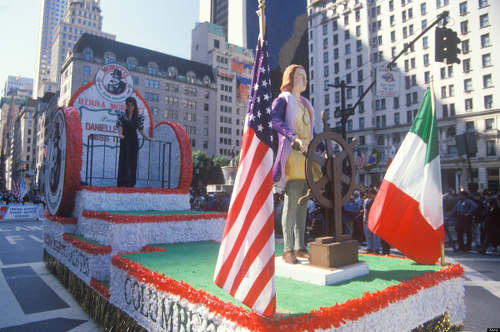
Worldwide, over 400 statues were erected in addition to other monuments.
Francisco de Miranda, the liberator of Venezuela, surpassed the thirteen former colonies in North America who latched their identity to Columbus. As the Spanish Empire broke up in the early nineteenth century, Miranda returned to the “Golden Age” of Spanish imperialism and named the entire landmass from 45 degrees north and west of the Mississippi River to Patagonia, Gran Colombia.
Ultimately, the Republic of Colombia extended from Panama to the north-western border of Brazil. After the mid-nineteenth century, further evolution limited its application to the Republic of Colombia.
The quadricentenary of Columbus’ first landfall in the region was a much more popular affair. The renewal of public veneration was initiated by the Italian diaspora in New York (1866) and San Francisco (1869). These Italian communities did not envisage a national embrace of Columbus.
Indeed, their objective was to consolidate their own ethnic community around a common icon. Their initiative paid off when Benjamin Harrison issued the first presidential proclamation to observe the event as a public holiday in 1892.
In 1882 the Irish founded the religious order called the Knights of Columbus, described as “the world’s largest Catholic fraternal service organisation”. They openly declared that they were “bound together by the ideal of Christopher Columbus… the one whose hand brought Christianity to the New World.”
A branch of the order was established in Trinidad, and may have influenced the early commemoration of Discovery Day as a public holiday (1903).

In the US, the order successfully pressed President FD Roosevelt to declare Columbus Day a federal holiday in 1937.
The Catholic reaction to Columbus in the US by Irish and Italians in the latter nineteenth century had its resonance in France, as explained by historian Roselly de Lorgues in his Histoire Posthume de Christophe Colomb. The Catholic clergy in Trinidad was still dominated by French priests, supplemented by some Irish and quite a few nuns of the Order of Cluny.
In this way, the Borde brothers of Trinidad, Pierre-Gustave and Hypolite—who spearheaded the revival of Columbus from the 1870s—were feeding off developments from both sides of the Atlantic. Interestingly, their two greatest legacies were the historical sanitation of Columbus in the book, Histoire de l’Ile de la Trinidad sous le Government Espagnol (History of the Island of Trinidad Under Spanish Rule, 1876-1882) and the erection of a life-sized statue near the Church of the Immaculate Conception.
In closing part three of this four-part series of articles, it should be noted that the affirmation of white supremacy in the public landscaping of Columbus did not proceed without a challenge from indigenous peoples.
In 1912, Spain fully embraced Columbus with a declaration of 12 October as Día de Colón (Columbus Day). In 1917 it proclaimed the day as Día de La Raza (Day of the Race) as a sort of commonwealth appeal to Latin America, and recognised the day as the beginning of “the miracle of conquering for civilisation the immense land where today the American nations flourish”—but with no reference to the human cost of conquest.
Indigenous peoples in Mexico and Peru regarded this silence as an unbearable insult and immediately launched indigenismo, a movement that would gain recognition decades later by the United Nations—resulting in several declarations of their human rights, including the right to reparations.
Part Four will explore the Trinidad situation more fully.
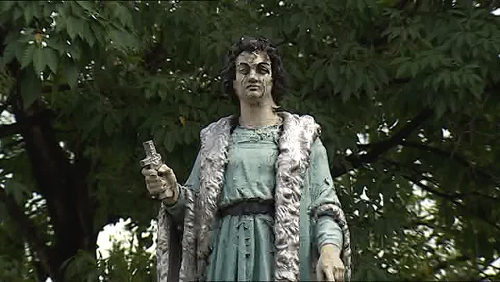
Editor’s Note: Click HERE for part one as historian Dr Claudius Fergus judges Christopher Columbus through the lens of history and explains why his statue should be an affront to Trinidad and Tobago.
Click HERE for the fourth and final part of this series, which focuses on Columbus’ deification in Trinidad and Tobago.
Claudius Fergus is a retired Senior Lecturer in the Department of History at UWI’s St Augustine Campus who specialises in the abolition of British colonial slavery and its transatlantic slave trade.
His major work on the subject is Revolutionary Emancipation: Slavery and Abolitionism in the British West Indies (2013). He has other extensive publications in peer-reviewed journals and edited books.
 Wired868 Wired868 for smart sport news and opinion
Wired868 Wired868 for smart sport news and opinion


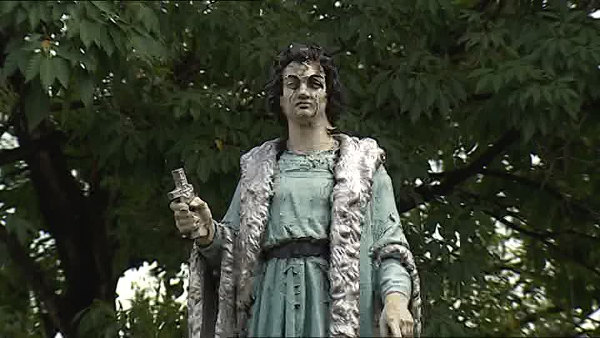


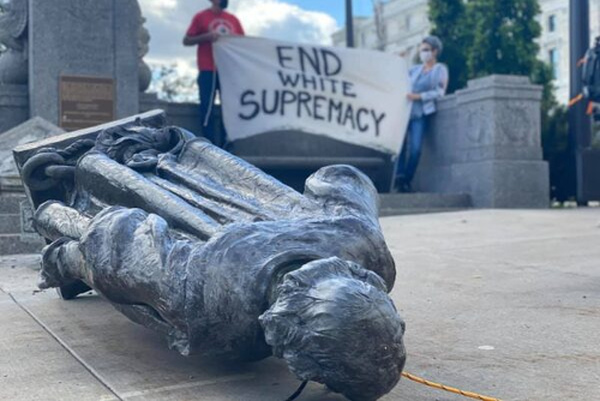

What history has to come to terms with is that Columbus was the frontman whiteboy…
We see them right throughout history….
The guy that the black Africans who knew the world was round…
Who had the maps…
Who had made the voyage before…
but to get the big money wine and the guns and the pips to launch a full expedition…
That’s why they needed the Christopher Conman…ah mean Columbus…
Thanks. Looking forward to Part Four.